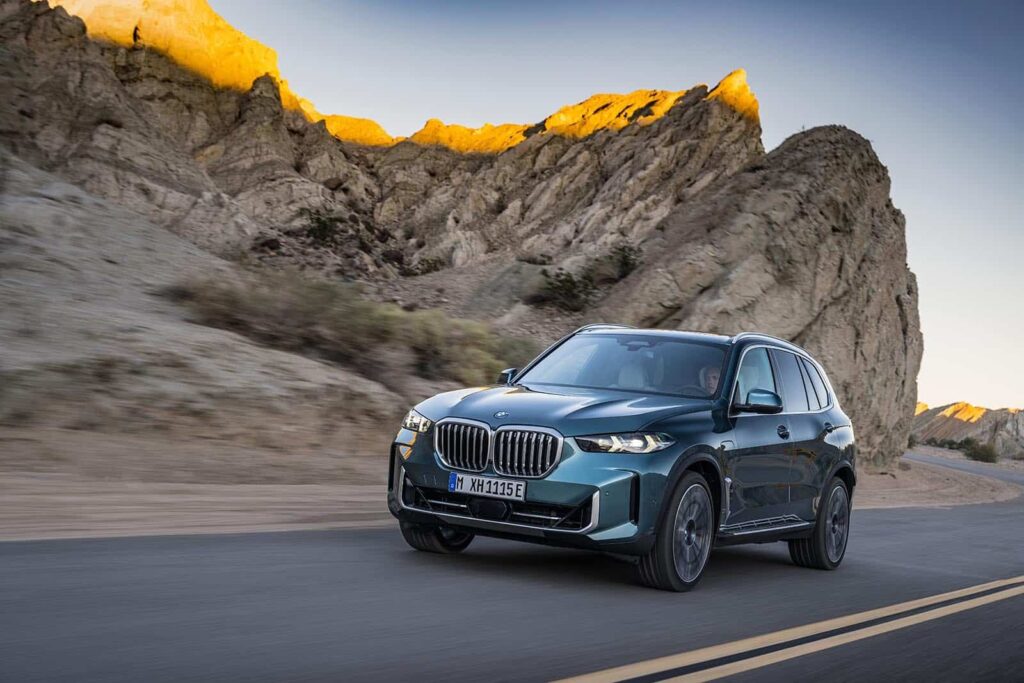
The automotive industry, a realm of ceaseless innovation and evolving desires, frequently witnesses the ebb and flow of vehicle models. While some designs are deservedly relegated to the history books, others, imbued with a unique blend of character and pioneering spirit, depart too soon, leaving a void felt keenly by enthusiasts and practical drivers alike. These cherished machines often carry with them a legacy of distinctive aesthetics, groundbreaking technologies, or a particular driving philosophy that resonates across generations.
In a fascinating turn of events, the industry has recently embraced a compelling trend: the revival of these beloved, retired automotive stars. This movement isn’t merely a nostalgic glance backward; it represents a sophisticated fusion of historical reverence and contemporary engineering prowess. By reintroducing iconic nameplates, manufacturers are not only tapping into a powerful wellspring of public sentiment but are also demonstrating how modern technology can rejuvenate classic appeal, enhancing performance, safety, and efficiency for a new era.
This in-depth article embarks on a journey through the surprising comebacks that have reshaped various segments of the automotive landscape. From rugged off-road behemoths re-engineered for twenty-first-century adventures to sleek sports cars reborn with electrified hearts, these resurrected vehicles exemplify the delicate balance between honoring tradition and embracing the future. We will explore how these models have successfully blended their classic charm with advanced features, offering something truly special for long-time fans and new drivers alike.
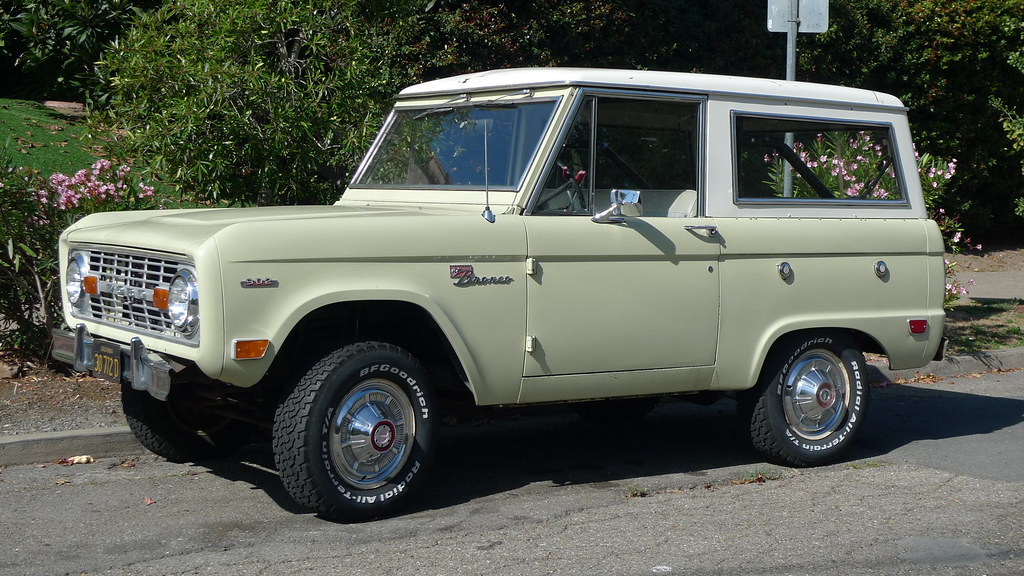
1. **Ford Bronco** The Ford Bronco, an emblem of rugged Americana, made a celebrated return in 2021, igniting widespread excitement among its dedicated fanbase. After its discontinuation in 1996, the Bronco’s legacy of robust durability and unyielding adventure lingered strongly in the collective automotive consciousness. Its absence created a noticeable void, particularly for those seeking a go-to vehicle for serious off-road excursions. Ford’s meticulous approach to this comeback ensured that the new Bronco honored its storied past while integrating sophisticated modern technologies to elevate its performance envelope.
The 2021 Bronco, available in both traditional two-door and more versatile four-door configurations, masterfully blends its iconic, classic styling with a suite of contemporary features. This thoughtful design strategy aimed to captivate not only seasoned off-road enthusiasts who fondly remembered the original but also a new generation of adventurers. The emphasis on maintaining its unmistakable aesthetic, while discreetly weaving in advanced capabilities, proved crucial to its warm reception and commercial success, channeling the spirit of its predecessors.
Beyond its evocative design, the 2021 Bronco arrived packed with advanced off-road capabilities that firmly establish it as a formidable competitor in the adventure vehicle market. It comes equipped with a sophisticated array of features including intuitive terrain management systems, strategically placed trail cameras for enhanced situational awareness, and robust locking differentials. These engineering enhancements ensure that drivers can confidently confront and conquer a diverse range of challenging environments. The new Bronco successfully bridges the chasm between old-school toughness and modern conveniences, setting a high standard for contemporary off-road vehicles.
Car Model Information: 2021 Ford Bronco Outer Banks
Name: Ford Bronco
Caption: 2021 Ford Bronco Outer Banks (4-door)
Manufacturer: Ford Motor Company
Production: 1965–1996,2021–present
Class: Compact SUV
Layout: Front-engine, four-wheel-drive
BodyStyle: SUV
Successor: Ford Expedition
ModelYears: 1966–1996,2021–present
Categories: 1970s cars, 1980s cars, 1990s cars, 2020s cars, All-wheel-drive vehicles
Summary: The Ford Bronco is a model line of SUVs manufactured and marketed by Ford. The first SUV model developed by the company, five generations of the Bronco were sold from the 1966 to 1996 model years. A sixth generation of the model line was introduced for the 2021 model year. The nameplate has been used on other Ford SUVs, namely the 1984–1990 Bronco II compact SUV, the 2021 Bronco Sport compact crossover, and the China-only 2025 Bronco New Energy.
Originally developed as a compact off-road vehicle using its own chassis, the Bronco initially competed against the Jeep CJ-5 and International Scout. For 1978, Ford enlarged the Bronco, making it a short-wheelbase version of the F-Series pickup truck; the full-size Bronco now competed against the Chevrolet K5 Blazer and Dodge Ramcharger.
Following a decline in demand for large two-door SUVs, Ford discontinued the Bronco after the 1996 model year, replacing it with the four-door Ford Expedition; followed by the larger Ford Excursion. After a 25-year hiatus, the sixth-generation Bronco was reintroduced in 2021 as a mid-size two-door SUV. It is also offered as a full-size four-door SUV with a 16 in (41 cm) longer wheelbase. It competes directly with the Jeep Wrangler as both a two-door and a four-door (hardtop) convertible.
From 1965 to 1996, the Ford Bronco was manufactured by Ford at its Michigan Truck Plant in Wayne, Michigan, where it also manufactures the sixth-generation version.
Get more information about: Ford Bronco
Buying a high-performing used car >>>
Brand: Ford Model: Bronco
Price: $43,747 Mileage: 6,514 mi.
Read more about: Buyer Beware: 10 SUVs Prone to Costly Repairs Before 90,000 Miles, According to Experts

2. **Toyota Land Cruiser** The Toyota Land Cruiser has long been a global benchmark for unwavering reliability and unparalleled off-road prowess, and its highly anticipated return to the U.S. market in 2024 underscores its enduring popularity. Its discontinuation in 2021 left a noticeable gap for many off-road enthusiasts who relied on it as their premier vehicle for expeditionary adventures. Renowned for its remarkable ability to traverse the most demanding terrains while simultaneously providing a remarkably comfortable ride, the Land Cruiser’s temporary departure was keenly felt within the robust off-road community.
The 2024 comeback of the Land Cruiser brings with it a comprehensive array of modern updates, yet it meticulously retains the fundamental toughness and dependable character that cemented its legendary status. This strategic evolution ensures that the vehicle appeals to both long-standing, seasoned adventurers and individuals new to the world of off-roading. Toyota has equipped the latest model with state-of-the-art safety features, a significantly improved suspension system designed for enhanced ride dynamics, and cutting-edge technology seamlessly integrated to elevate the overall driving experience.
These enhancements are critical in ensuring the Land Cruiser remains intensely competitive within today’s dynamic automotive landscape. While incorporating advanced functionalities, it steadfastly preserves the rugged capability that off-road purists demand and cherish. The 2024 Land Cruiser’s return signifies more than just a respectful homage to its illustrious past; it represents a decisive leap forward, illustrating precisely how a legendary vehicle can meticulously evolve, embracing innovation, all while resolutely remaining true to its foundational roots and inherent character.
Car Model Information: 2019 Volvo XC90 T6 Inscription
Name: Toyota Land Cruiser
Caption: 2021 Toyota Land Cruiser ZX (VJA300, Colombia)
Manufacturer: Toyota
Production: 1951–present
Class: unbulleted list
Layout: Front-engine, four-wheel-drive
Categories: 1960s cars, 1970s cars, 1980s cars, 1990s cars, 2000s cars
Summary: The Toyota Land Cruiser, also sometimes spelt as LandCruiser, is a series of four-wheel drive vehicles produced by the Japanese automobile manufacturer Toyota. It is Toyota’s longest running series of models. As of 2019, the sales of the Land Cruiser totalled more than 10 million units worldwide. Production of the first generation of the Land Cruiser began in 1951. The Land Cruiser has been produced in convertible, hardtop, station wagon and cab chassis body styles. The Land Cruiser’s reliability and longevity have led to huge popularity, especially in Australia, where it is the best-selling body-on-frame, four-wheel drive vehicle. Toyota also extensively tests the Land Cruiser in the Australian outback – considered to be one of the toughest operating environments in both temperature and terrain. In Japan, the Land Cruiser was once exclusive to Toyota Japanese dealerships called Toyota Store. Since 1990, the smaller variation of the Land Cruiser has been marketed as the Land Cruiser Prado. Described as a ‘light-duty’ version of the Land Cruiser by Toyota, it features a different design compared to the full-size model and, up until 2023, it remains the only comfort-oriented Land Cruiser available with a short-wheelbase 3-door version. As of 2023, the full-size Land Cruiser was available in many markets. Exceptions include the United States (since 2021 where the smaller Land Cruiser Prado has been sold under the Land Cruiser name since 2024), Canada (since 1996), Malaysia (which receives the Lexus LX instead), Hong Kong, Macau, South Korea, Brazil, and most of Europe. In Europe, the only countries where the full-size Land Cruiser is officially sold are Gibraltar, Moldova, Russia, Belarus, and Ukraine. The Land Cruiser is hugely popular in the Middle East, Russia, Australia, India, Bangladesh, Pakistan, New Caledonia, and Africa. It is used by farmers, the construction industry, non-governmental and humanitarian organizations, the United Nations, national armies (often the pickup version), and irregular armed groups who turn them into “technicals” by mounting machine guns in the rear. In August 2019, cumulative global sales of the Land Cruiser family surpassed 10 million units.
Get more information about: Toyota Land Cruiser
Buying a high-performing used car >>>
Brand: Toyota Model: Land Cruiser
Price: $28,859 Mileage: 43,261 mi.
Read more about: Beyond the Zombie Hordes: 12 Indestructible Beasts to Master Any Apocalypse
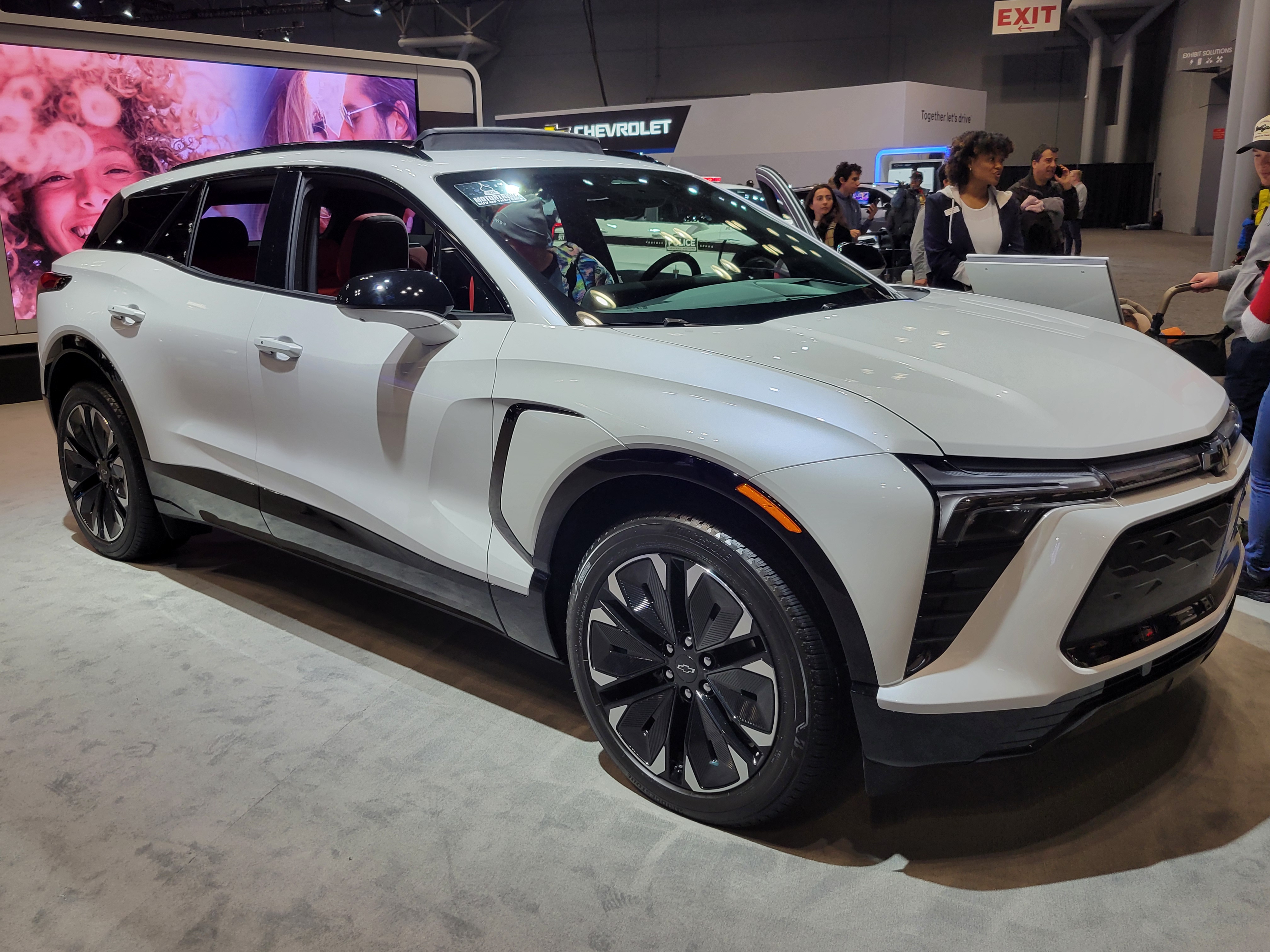
3. **Chevrolet Blazer** Chevrolet’s announcement in 2019 regarding the return of the Blazer stirred considerable interest, though its reimagining was not precisely what long-time aficionados had anticipated. Historically, the Blazer was recognized as a rugged, truck-based SUV, a symbol of utilitarian toughness that dominated the off-road landscape. However, its reintroduction pivoted dramatically, presenting itself as a sleek, family-friendly crossover. This significant conceptual shift surprised many who fondly recalled the Blazer’s formidable off-road heritage.
This reinvention marked a distinct new direction for the model, strategically aimed at capturing a significant share of today’s burgeoning mid-size crossover market. The contemporary Blazer meticulously blends sporty styling cues with a pronounced emphasis on practicality, thereby offering a vehicle that appeals more directly to modern families and daily commuters than to hardcore off-road enthusiasts. This adaptation underscores a manufacturer’s need to evolve with market demands, sometimes by reinterpreting an iconic nameplate for a new era.
Despite this profound shift in its fundamental design and target demographic, the 2019 Blazer still manages to embody some of the sportiness and inherent capability associated with its original iteration. With a clear focus on performance and integrated technology, the new Blazer incorporates features such as advanced all-wheel drive systems, a responsive turbocharged engine, and a highly intuitive, user-friendly infotainment interface. Chevrolet’s strategic decision to adapt to contemporary market needs has resulted in a vehicle that proficiently balances both style and function, proving that a thoughtful reinvention can allow a vehicle to appeal to a broader audience without entirely forsaking the essence of what initially made it great.
Car Model Information: 2024 Chevrolet Blazer EV eAWD LT
Categories: All set index articles, Articles with short description, Cars introduced in 1969, Chevrolet vehicles, Commons category link from Wikidata
Summary: The Chevrolet Blazer is an automobile nameplate used by General Motors for its Chevrolet brand since 1969 for several SUV models:
Full-size Chevrolet K5 Blazer, based on the C/K pickup chassis and built from 1969 to 1995 (renamed Blazer in 1992 and renamed Tahoe in 1995 for the 2-door and 4-door model)
Compact and mid-size Chevrolet S-10 Blazer, based on the S-10 pickup and built from 1983 to 2012
Chevrolet Grand Blazer, sold in Argentina, Brazil and Ecuador from 1990 to 2000
Chevrolet Grand Blazer, full-size sold in Venezuela under the “Grand Blazer” name from 1993 to 1999 (GMT400 platform)
Chevrolet Grand Blazer Z71, sold in Venezuela from 2000 to 2002 (GMT820 platform)
Chevrolet Blazer (crossover), a mid-size crossover produced since 2019
Chevrolet Blazer EV, a battery electric mid-size crossover produced since 2023
Get more information about: Chevrolet Blazer
Buying a high-performing used car >>>
Brand: Chevrolet Model: Blazer
Price: $29,319 Mileage: 13,549 mi.
Read more about: Buyer Beware: 10 SUVs Prone to Costly Repairs Before 90,000 Miles, According to Experts
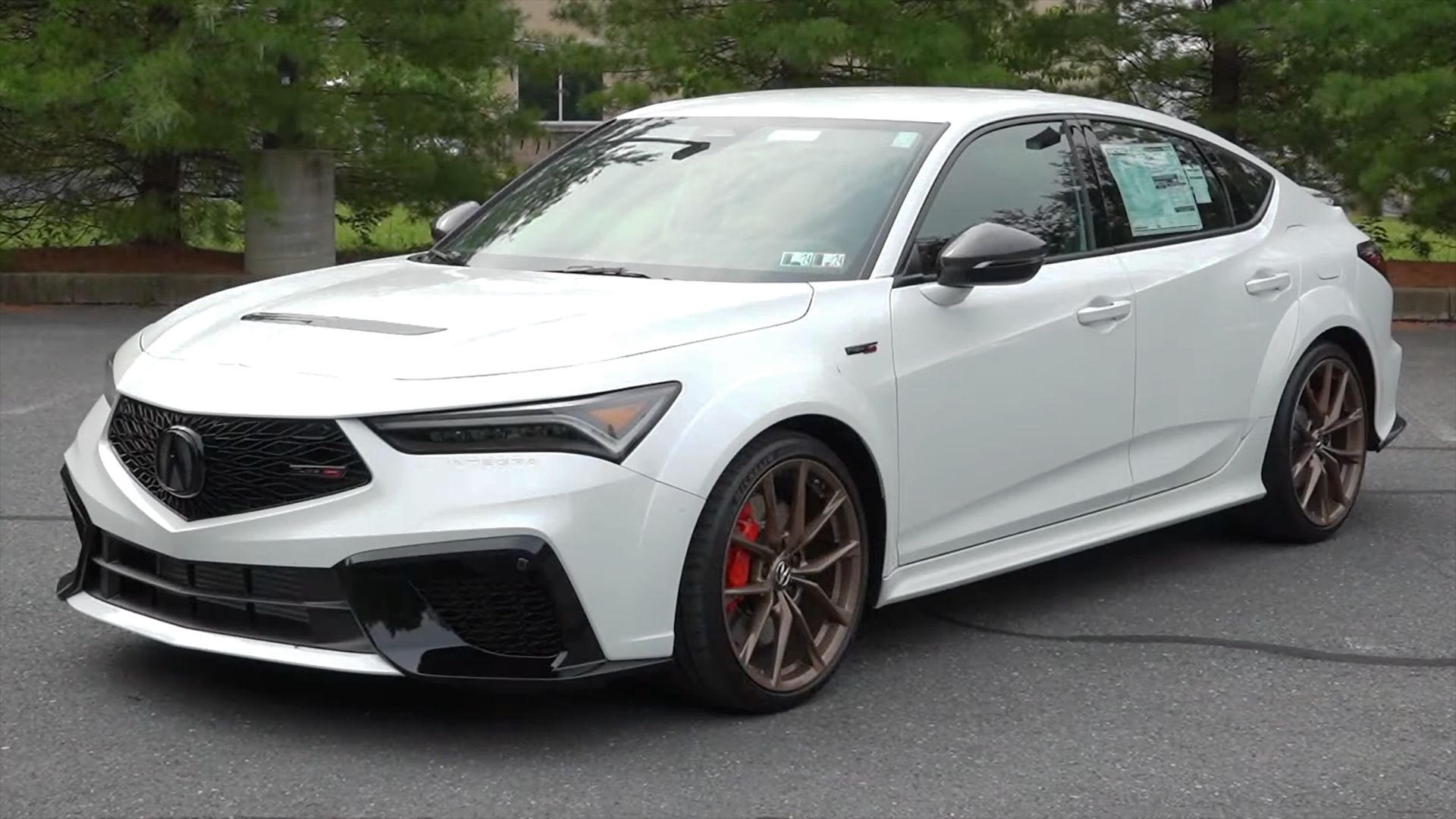
4. **Acura Integra** The Acura Integra’s much-anticipated return in 2023 generated a significant wave of excitement throughout the global automotive community, particularly among those who held a deep affection for the original compact sports car. Discontinued in 2006, the Integra had carved out a formidable reputation for its compelling combination of exhilarating performance and impressive affordability, firmly establishing itself as a popular and accessible choice for a wide spectrum of car enthusiasts. The 2023 iteration meticulously adheres to the Integra’s celebrated sporty origins, yet it does so with a pronounced emphasis on seamlessly integrating modern technology and advanced features designed to significantly enhance the overall driving experience.
This new iteration of the Integra represents a masterclass in blending nostalgic design elements with cutting-edge engineering principles, resulting in an automobile that skillfully appeals to both its devoted, long-standing fanbase and a fresh cadre of new drivers. Its designers thoughtfully incorporated visual cues that pay homage to its predecessors, ensuring an immediate recognition factor, while simultaneously embedding the latest advancements in automotive design and functionality. This dual appeal has been pivotal to its successful re-entry into a highly competitive market segment.
A defining characteristic that sets the new Acura Integra apart is its exemplary equilibrium of potent power, precise handling, and refined comfort. Equipped with a potent turbocharged engine and the welcome availability of a manual transmission, the Integra delivers a truly thrilling and engaging driving experience, one that is highly reminiscent of the dynamic feel offered by its iconic forebears. Crucially, it also comes comprehensively outfitted with state-of-the-art technological features, including an adaptive cruise control system, a sophisticated digital driver display, and a premium sound system. By adeptly merging the very best attributes of its revered past with the most innovative advancements of today, the 2023 Integra emphatically demonstrates that classic vehicles can indeed undergo significant evolution without relinquishing their core identity.
Car Model Information: 2024 Acura Integra A-SPEC
Name: Honda Integra
Caption: 2002 Honda Integra Special Edition (DC5) in Australia.
Aka: Honda Civic (eleventh generation)
Manufacturer: Honda
Production: proper name
ModelYears: 1986–2006,2023–present
Assembly: Suzuka, Mie
Class: Compact car
BodyStyle: liftback,coupé
Layout: Front-engine, front-wheel-drive layout,Front-engine, four-wheel-drive layout
Predecessor: Honda Quint
Successor: ubl
Categories: 1990s cars, 2000s cars, 2020s cars, All articles with unsourced statements, All articles with vague or ambiguous time
Summary: The Honda Integra, sold in North America as the Acura Integra and later the Acura RSX, is an automobile produced by the Japanese company Honda from 1985 until 2006, and then since 2021. It succeeded the Quint as a more luxurious and sport-oriented derivative of the Civic. The Integra was one of the launch models for Acura in the US in 1986 alongside the Acura Legend. Throughout its production run, the Integra was highly regarded for its handling and performance. The 1995–2001 Integra Type R is widely regarded as one of the best front-wheel-drive cars of all time. The Integra nameplate was revived in 2021 after a 16-year hiatus. The Honda Integra nameplate is used for a restyled Honda Civic sedan for the Chinese market, while the Acura Integra nameplate is used for a Civic-based liftback for North America, replacing the Acura ILX.
Get more information about: Honda Integra
Buying a high-performing used car >>>
Brand: Acura Model: Integra
Price: $29,700 Mileage: 10,245 mi.
Read more about: Dodgy Drives and Mechanical Mayhem: 14 Japanese Cars You Absolutely Should Not Buy, According to an Automotive Expert
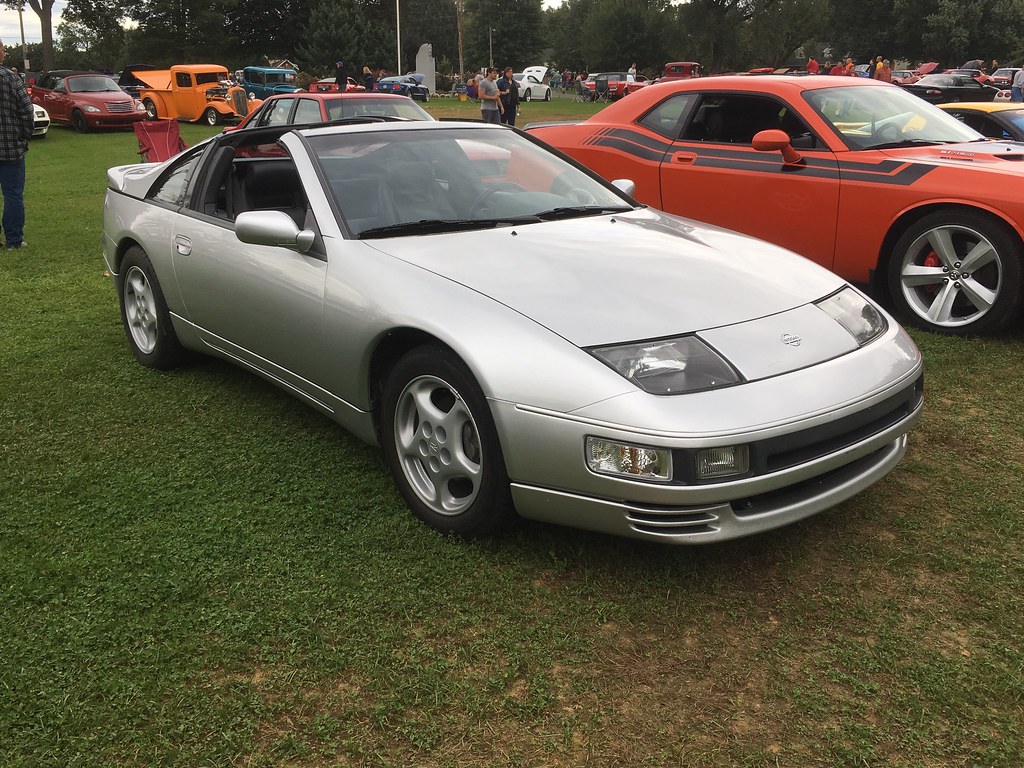
5. **Nissan Z** The Nissan Z, formerly recognized in its previous guise as the 370Z, executed a truly triumphant return in 2023 following a considerable hiatus, achieving this feat with an exquisite amalgamation of profound nostalgia and cutting-edge innovation. Discontinued in 2009, the distinguished Z model series has consistently embodied thrilling performance characteristics and a sleek, instantly recognizable design aesthetic. The 2023 Z embraces its rich heritage with deliberate intent, meticulously incorporating retro styling elements such as its signature long hood and gracefully sloped roofline, design cues that distinctly harken back to its revered earlier models.
Concurrently, the new Z definitively delivers on contemporary expectations by integrating advanced technology, highly potent high-performance engines, and meticulously refined driving dynamics, all of which resonate deeply with modern sports car enthusiasts. This thoughtful dual approach ensures that the vehicle is not merely a relic of the past but a vibrant, relevant contender in today’s fiercely competitive performance market. The delicate balance between respecting its lineage and pushing the boundaries of current automotive engineering has been a hallmark of its design philosophy.
Under the hood, the new Nissan Z is powered by an exceptionally potent 400-horsepower twin-turbocharged V6 engine, positioning it as a formidable and serious contender within the elite sports car segment. Beyond its impressive raw performance capabilities, the Z proudly showcases an array of modern features, including a fully digital instrument cluster that provides clear, customizable information, and enhanced driver-assistance technologies designed for both safety and convenience. This potent combination of formidable power and meticulous precision culminates in an exhilarating driving experience, one that remains profoundly true to the Z’s legendary reputation for engaging, driver-focused performance. By masterfully blending timeless design cues with contemporary performance enhancements, the 2023 Z successfully captivates the hearts of both nostalgic drivers and new buyers seeking a high-performance, stylish ride.
Car Model Information: 2024 Nissan Z Performance Auto
Name: Nissan Z-car
Caption: 1970 Datsun 240Z (S30)
Aka: Nissan Fairlady Z (Japan)
Manufacturer: Nissan
Production: October 1969 – present
Assembly: ubl
Class: Sports car,Grand tourer
Layout: Front-engine, rear-wheel-drive layout,Front-engine, rear-wheel-drive layout#Front mid-engine, rear-wheel-drive layout
Predecessor: Datsun Sports
Categories: 1970s cars, 1980s cars, 1990s cars, 2000s cars, 2010s cars
Summary: The Nissan Z-series is a model series of sports cars manufactured by Nissan since 1969. The original Z was first sold on October of 1969 in Japan as the Nissan Fairlady Z at Nissan Exhibition dealerships that previously sold the Nissan Bluebird. It was initially marketed as the Datsun 240Z for international customers. Since then, Nissan has manufactured seven generations of Z-cars, with the most recent—simply known as the Nissan Z—in production since 2022. Main rival cars in the Japanese market included the Toyota Celica, Toyota Supra, Mitsubishi 3000GT and Mazda RX-7. The earlier models of the Nissan Z were built at the Nissan Shatai plant in Hiratsuka until 2000, while the later models (350Z and 370Z) are built at Oppama (2002–2004) and Tochigi (2004–present). Known for their looks, reliability, performance and affordability, every Z car has been sold in Japan as the Fairlady Z and elsewhere under the names Nissan Fairlady Z (S30), Nissan Fairlady Z (S130), Nissan 300ZX, Nissan 350Z, Nissan 370Z and Nissan Z.
Get more information about: Nissan Z-car
Buying a high-performing used car >>>
Brand: Nissan Model: Z
Price: $39,969 Mileage: 2,288 mi.
Read more about: Steer Clear: 11 New Popular Cars You Should Avoid at All Costs, According to Experts
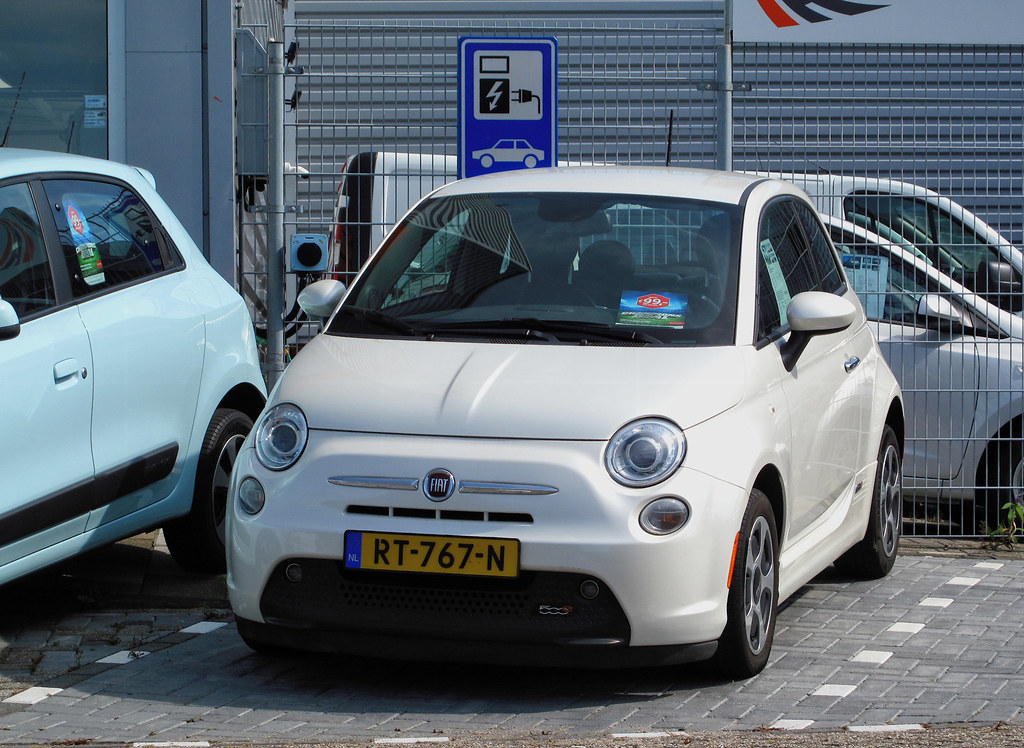
6. **Fiat 500e** The Fiat 500 has consistently been celebrated for its distinctive compact dimensions and undeniably charming design, and its much-anticipated return in 2024 as the all-electric Fiat 500e signifies a bold and decisive shift towards a sustainable future. Following its discontinuation in 2019, the resurrection of the 500 as an electric vehicle speaks volumes about the burgeoning demand for eco-friendly automobiles that steadfastly refuse to compromise on either style or inherent personality. Fiat’s designers meticulously preserved the quintessential classic look of the original model, thereby ensuring that the 500e remains instantly recognizable and endearing on urban thoroughfares.
This strategic decision positions the 500e not merely as a functional and practical urban car but also as a distinctively stylish and environmentally conscious choice, perfectly suited for the discerning modern driver. The context also notes a prior revival of the gas-powered 500 in 2007, which was a commercial smash hit in Europe, selling over three million examples by 2019, before the controversial axing in favor of the 500e. While demand for the electric version initially slumped, Fiat plans to relaunch a hybrid 500 in late 2025, demonstrating the nameplate’s continuous evolution and adaptation.
The 2024 Fiat 500e delivers substantially more than just an eye-catching design; it is comprehensively equipped with a suite of features that render it an eminently practical choice for everyday commuting within urban environments. Boasting an estimated range of up to 200 miles on a singular charge, the 500e is meticulously engineered for city life, providing ample range for the vast majority of urban journeys without range anxiety. Furthermore, it comes fully integrated with the latest advancements in safety and infotainment technology, encompassing adaptive cruise control and a highly intuitive touchscreen interface. The Fiat 500e’s compelling amalgamation of retro charm, contemporary convenience, and commendable electric efficiency strategically positions it as a leading contender within the rapidly expanding market for compact electric vehicles.
Car Model Information: 2024 FIAT 500e Base
Name: Fiat 500e (New 500)
Manufacturer: Fiat
ModelCode: 332
Production: February 2020–present
ModelYears: 2020–present
Assembly: Fiat Mirafiori,Turin
Designer: Lorenzo Battisti, Dario Pellegrino at Centro Stile Fiat
Class: City car
BodyStyle: hatchback,cabriolet,4-door hatchback
Platform: STLA City
Motor: GKN Automotive G400 IPMS interior permanent-magnet synchronous motor
Battery: Lithium-ion battery
Powerout: {{cvt,70,kW,PS hp,0
ElectricRange: {{cvt,185,km,0,Worldwide harmonized Light vehicles Test Procedure
Charging: DC:,50nbspkW (24nbspkWh battery),85nbspkW (42nbspkWh battery),400nbspV 3-Phase AC: 11nbspkW,230nbspV AC: 6.6nbspkW,120nbspV AC: 3.3nbspkW
Wheelbase: cvt
Length: cvt
Width: cvt
Height: cvt
Weight: cvt
Predecessor: Fiat 500e (2013)
Sp: uk
Categories: 2020s cars, All Wikipedia articles written in British English with Oxford spelling, All articles with bare URLs for citations, Articles with bare URLs for citations from August 2025, Articles with short description
Summary: The Fiat 500e (project 332), also known as the 500 elettrica or New 500 is a hybrid or battery-electric car by Italian manufacturer Fiat as the third generation of its 500 city cars, following the original 500 (1957–1975) and second-generation 500 (2007–2024). The third-generation 500e is manufactured at the Mirafiori plant in Turin, Italy, starting in 2020, and was sold alongside the second-generation 500, which was manufactured in Tychy, Poland until 2024. It was scheduled to be launched at the Geneva Motor Show but that event was canceled due to the COVID-19 pandemic; it was launched on 4 March 2020 in Milan.
The 500e has a 320 km (199 mi) range on the European WLTP combined test cycle, and achieves 400 km (249 mi) on that test’s urban cycle, which is generally favourable toward electric vehicles (EVs). Most versions of the car are powered by an 87 kW (117 hp) electric traction motor, fed by a 42 kWh lithium-ion battery pack.
Get more information about: Fiat 500e
Buying a high-performing used car >>>
Brand: Fiat Model: 500e
Price: $22,305 Mileage: 3,207 mi.
Read more about: Miles of Misery: 14 Vehicles Drivers Can’t Wait to Ditch
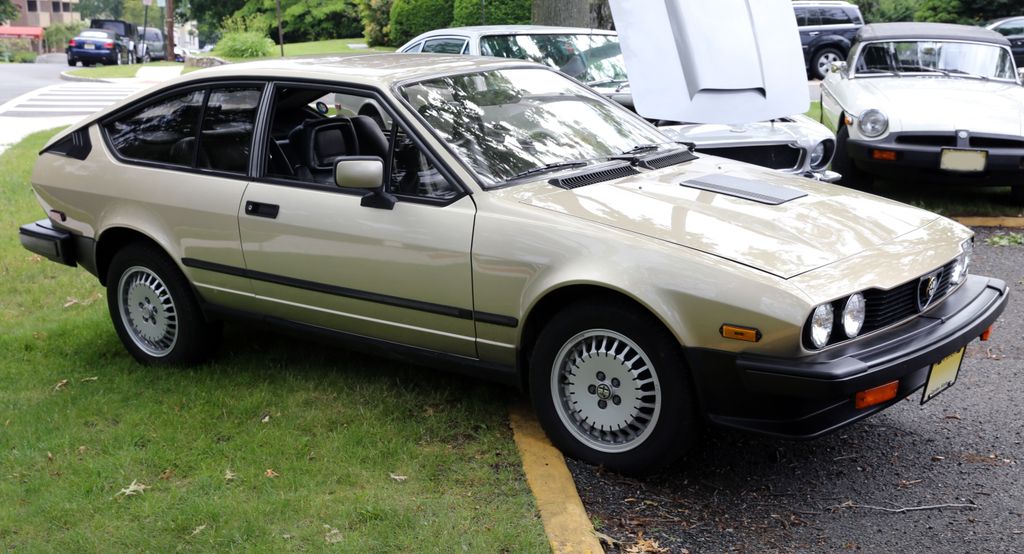
7. **Alfa Romeo GTV** Slated for an eagerly anticipated return in 2025, the Alfa Romeo GTV stands as one of the most significant and highly awaited comebacks in the competitive realm of luxury sports cars. Upon its discontinuation in 2005, the GTV held an iconic status, widely regarded as a profound symbol of Italian performance and sophisticated style, captivating the collective imagination of car enthusiasts with its exquisitely sleek design and formidable engine prowess. The brand’s decision to revive the GTV now, with a distinctively modern interpretation, underscores a strategic commitment to blending its rich heritage with forward-looking automotive advancements.
Early indications suggest that the resurrected GTV will be available as a cutting-edge hybrid or a fully electric sports car. This ambitious revival unequivocally signals Alfa Romeo’s dedication to harmonizing environmental sustainability with the exhilarating performance characteristics that are synonymous with its marque. Such an approach is poised to make the new GTV a truly standout offering within the rapidly evolving future landscape of high-performance sports cars, demonstrating a progressive vision without abandoning its core values.
The 2025 Alfa Romeo GTV promises an exquisite synthesis of its storied heritage and groundbreaking technology, offering an exciting glimpse into the prospective future of high-performance vehicles. The forthcoming GTV is projected to deliver thrilling speed and exceptionally precise handling, all while incorporating advanced hybrid or electric powertrains designed for superior efficiency and reduced emissions. In addition to its anticipated impressive performance metrics, the GTV is expected to feature sumptuously luxurious interiors and innovative infotainment systems, thereby ensuring that it provides an unequivocally premium and engaging driving experience. With its compelling blend of historical prestige, cutting-edge performance, and a clear commitment to sustainability, the GTV’s return is poised to be recognized as one of the most exciting and impactful automotive comebacks in recent memory.
Car Model Information: 2019 Volvo XC90 T6 Inscription
Name: Alfa Romeo GTV,Alfa Romeo Spider
Caption: Alfa Romeo GTV 2.0 V6 TB
Manufacturer: Alfa Romeo
Production: 1993–2004 (Spider),1994–2004 (GTV)
ModelYears: 1995–2004
Assembly: Arese,San Giorgio Canavese
Designer: Enrico Fumia,Walter de Silva,Pininfarina
Class: Sports car
Platform: Fiat Tipo Due platform
BodyStyle: 2+2 (car body style),Roadster (automobile)
Layout: Front-engine, front-wheel-drive layout
Engine: Alfa Romeo Twin Spark engine,2.0 L Twin Spark 16V I4,JTS engine,Alfa Romeo V6 engine,3.0 L Alfa Romeo 12V V6,3.0 L–3.2 L Alfa Romeo 24V V6
Transmission: Manual transmission
Wheelbase: 2540 mm
Abbr: on (Spider)
Length: 4285 mm
Width: 1780 mm
Height: 1318 mm
Weight: convert
Predecessor: Alfa Romeo Alfetta#GT,Alfa Romeo Spider
Successor: Alfa Romeo Brera and Spider
Sp: uk
Related: Fiat Coupé,Alfa Romeo Vola
Categories: 2000s cars, Alfa Romeo vehicles, All articles needing additional references, All articles with unsourced statements, Articles containing explicitly cited English-language text
Summary: The Alfa Romeo GTV and the Alfa Romeo Spider (Type 916) are sports cars produced by the Italian automobile manufacturer Alfa Romeo from 1993 to 2004. The GTV is a 2+2 coupé, while the Spider is a two-seater roadster. Production totaled 38,891 units for the Spider and 42,937 units for the GTV.
The GTV’s name (Gran Turismo Veloce–English: Fast Grand Touring) placed it as the successor to the long-discontinued Alfetta GTV coupé, whereas the Spider was effectively the replacement for the then 30-year-old 105-series Giulia Spider. The GTV was available until the launch of the Brera in 2005, while the Spider lasted another year until the launch of its Brera-based successor in 2006.
The Alfa Romeo GTV was described as “one of the best sports cars of its time” by motoring journalist Jeremy Clarkson in 1998 and was listed at number 29 in Top 100 Cars in 2001.
Get more information about: Alfa Romeo GTV and Spider
Buying a high-performing used car >>>
Brand: Alfa Romeo Model: GTV
Price: $28,859 Mileage: 43,261 mi.
Read more about: Hidden Gems: 11 Used Sports Cars That Deliver Thrills and Value Beyond Expectation

8. **Alpine A110**After decades away from the automotive spotlight, the revered Alpine A110 name was triumphantly relaunched in 2016, breathing new life into a legendary moniker. The original A110, a true icon of the 1960s, etched its place in history as a rallying titan, famously clinching victory at the inaugural World Rally Championship event. Its successor, however, was envisioned not merely as a rally car for a new generation, but as a more versatile and comprehensively capable all-rounder, meticulously engineered to deliver an exceptional driving experience on a wider variety of roads.
Remarkably, the new A110 demonstrates a clever blend of resourcefulness and bespoke engineering. While it judiciously borrows crucial components from other esteemed Renault Group vehicles, including its spirited engine, the critical aspects of its chassis and suspension systems were uniquely developed. This meticulous process benefited from specialized assistance from the renowned British sports car manufacturer, Caterham, ensuring precision and dynamic prowess. This strategic approach to part sharing and targeted bespoke design proved instrumental in managing production costs, positioning the A110 as a compelling and competitive alternative to established rivals such as the Porsche Cayman.
Under its distinctively sculpted hood, the A110 is powered by a comparatively modest 1.8-liter engine, yet this unit has been expertly tuned and calibrated to deliver an impressive 300 horsepower. This power output, especially given the car’s lightweight design, translates into a remarkably nimble and responsive driving experience. While enthusiasts in America regrettably miss out on this modern marvel due to its unavailability in the market, with the 25-year import rule dictating a prolonged wait, its continued production in Europe is a testament to its sustained appeal and the fervent appreciation it garners among connoisseurs.
In an era increasingly dominated by outright power figures and a plethora of technological party tricks, the Alpine A110 stands out as a rare and refreshing anomaly. Its design philosophy emphatically prioritizes the purity of driver enjoyment, focusing on direct feedback, agile handling, and an unadulterated connection between the car and its pilot. This unwavering commitment to an engaging driving experience, rather than chasing headline-grabbing statistics, makes the A110 a truly special machine that thoroughly deserves to be savored and appreciated while it remains available on the market.
Read more about: The Gears of Time: Unearthing 14 Criminally Underrated Rides That Deserve Their Moment in the Sun
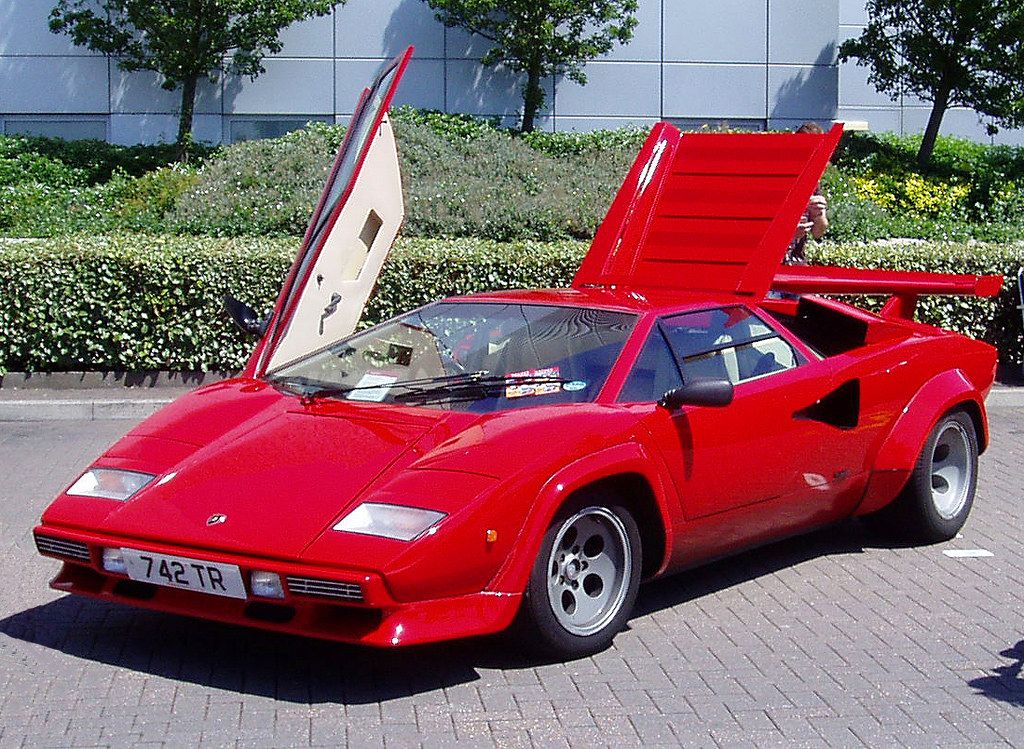
9. **Lamborghini Countach**Five decades after the original Countach first stunned the world with its radical design and unbridled performance, Lamborghini executed a truly audacious resurrection in 2022, introducing the Countach LPI 800-4 as an ultra-limited special edition. This modern interpretation paid reverent homage to its iconic forebear, meticulously borrowing a multitude of distinctive design cues that instantly connected it to its legendary past. The sharp, angular lines, the signature wedge profile, and the dramatic proportions were all meticulously reinterpreted, ensuring that its visual presence was as arresting and unmistakably Countach as ever, yet infused with contemporary flair.
While its aesthetics meticulously echoed history, the powertrain beneath its striking bodywork represented a profound leap into modern automotive engineering. The 2022 Countach abandoned the purely naturally aspirated V12 engines of its predecessors, instead embracing a sophisticated hybrid 6.5-liter V12 powertrain. This advanced combination of combustion power and electric assistance culminated in a staggering total system output of 803 horsepower, catapulting the new Countach into the upper echelons of hypercar performance. This technological marvel underscores Lamborghini’s commitment to cutting-edge innovation, even within a commemorative revival.
Despite its undeniably technologically impressive nature and its exceptional rarity—with a mere 112 examples ever produced, making it an exclusive treasure even by hypercar standards—the modern Countach, in some enthusiast circles, is arguably not regarded as quite as groundbreaking as the original. The first Countach, famously featuring revolutionary bodywork penned by Bertone and pioneering outlandish scissor doors, set new benchmarks for production car design and audacious styling. While the 2022 model is a formidable machine, its foundational concept and visual drama did not quite recalibrate the industry in the same seismic way.
Nonetheless, the resurrected Countach proved to be an instant sensation with wealthy collectors and dedicated brand enthusiasts, eager to own a piece of revived automotive legend. Though its value retention hasn’t mirrored the astronomical gains seen by some other ultra-rare hypercars, with examples today typically fetching around $2 million, representing a notable drop from its reported $2.64 million retail price back in 2022, its place as a coveted modern classic is already firmly established. It stands as a powerful testament to the enduring allure of the Countach nameplate and Lamborghini’s ability to electrify a legacy.
Car Model Information: 1989 Lamborghini Countach 25th Anniversary
Name: Lamborghini Countach
Caption: Lamborghini Countach LP5000 QV
Manufacturer: Lamborghini
Production: 1974–1990
Assembly: Sant’Agata Bolognese
Designer: Marcello Gandini
Class: Sports car
BodyStyle: coupe
Layout: Longitudinal engine,mid-engine,rear-wheel-drive
Related: Lamborghini LM002
Engine: Lamborghini V12,V12 engine,LP400, LP400 S: {{cvt,3929,cc,L,1,disp=flip
Transmission: synchromesh,Manual transmission
Wheelbase: 96.46 in
Abbr: on (LP5000QV)
Order: flip
Length: 162.99 in
Width: LP 400: {{cvt,74.28,in,mm,0,abbr=on,order=flip
Height: 42.13 in
Weight: {{convert,1300.5,kg,lb,0,abbr=on
Predecessor: Lamborghini Miura
Successor: Lamborghini Diablo
Doors: Scissor doors
Sp: uk
Categories: 1980s cars, 1990s cars, All articles with unsourced statements, Articles containing Italian-language text, Articles containing Piedmontese-language text
Summary: The Lamborghini Countach ( KOON-tahsh) is a rear mid-engine, rear-wheel-drive sports car produced by the Italian automobile manufacturer Lamborghini from 1974 until 1990. It is one of the many exotic designs developed by Italian design house Bertone, which pioneered and popularized the sharply angled “Italian Wedge” shape.
The wedge style was introduced to the public in 1970 with the Lancia Stratos Zero concept car. The first showing of the Countach prototype was at the 1971 Geneva Motor Show, as the Lamborghini LP500 concept.
The “Countach” nameplate was reused for the Sián-based limited-production hybrid-electric model called the Countach LPI 800-4 in 2021.
Get more information about: Lamborghini Countach
Buying a high-performing used car >>>
Brand: Lamborghini Model: Countach
Price: Not Priced Mileage: 7,493 mi.
Read more about: The Ultimate Flex: Exploring the World’s Most Expensive Celebrity Car Collections
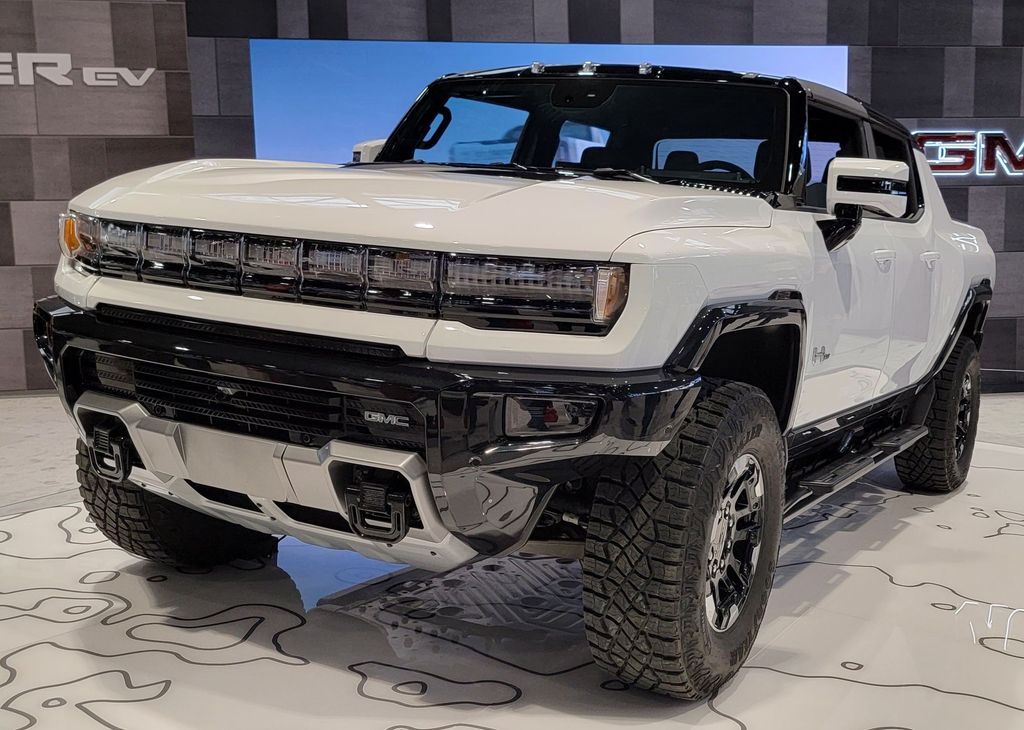
10. **GMC Hummer**Few vehicles seemed less likely candidates for an all-electric successor than the original Hummer, notorious for its image as perhaps the most excessive and gas-guzzling SUV available. Yet, defying all expectations, the GMC Hummer EV launched in both truck and SUV forms, more than a decade after the original Hummer H1, H2, and H3 were consigned to the archives. This bold reinvention showcased a radical pivot for the legendary off-road nameplate, positioning it as a symbol of electric power and sustainable brute force, albeit with an unapologetically oversized presence.
Despite its undeniable technological advancements and formidable capabilities, our extensive evaluations of the latest Hummer revealed that its real-world practicality, or rather the distinct lack thereof, might not fully justify its substantial asking price. The market boasts numerous other six-figure super-SUVs that offer superior on-road handling, more accommodating family hauling capabilities, and a greater emphasis on high-end luxury features, often without the Hummer’s considerable footprint and unique operational quirks.
However, the GMC Hummer EV’s unique selling proposition lies precisely in its audacious defiance of convention; it is a vehicle that, by many rational measures, simply doesn’t make logical sense, and that is its inherent charm. Beyond its genuinely famous “crab walk” feature, which allows it to move diagonally, and its undeniably oversized stature, there isn’t much that makes the Hummer inherently “better” than other, more mainstream electric SUVs and trucks in terms of pure utility. Yet, evidently, these flamboyant features and its sheer presence are more than enough to captivate and seal the deal for a significant number of buyers.
Indeed, the market has spoken with considerable enthusiasm, as GMC successfully sold almost 14,000 of these over-the-top off-roaders in 2024 alone. This impressive sales performance emphatically proves that there is a clearly sizeable and eager market out there for what is arguably the most nonsensical yet undeniably compelling electric vehicle currently available. The Hummer EV is a powerful statement, embodying a new kind of luxury and performance that prioritizes spectacle and capability in equal measure.
Car Model Information: 2019 Volvo XC90 T6 Inscription
Name: GMC Hummer EV
Caption: 2024 GMC Hummer EV3X (SUV)
Designer: Rick Scheer (director of design)
Powerout: 1000 hp
Abbr: on (SUV)
Battery: Ultium
Motor: Ultium Drive
ElectricRange: convert
Height: 79.1 in
Width: 86.46 in
Length: 196.8 in
Wheelbase: 126.7 in
Weight: Convert
Transmission: Single-speed
Related: Chevrolet Silverado EV,Cadillac Escalade IQ
Platform: General Motors BT1 platform
Predecessor: Hummer H2
Layout: Unbulleted list
BodyStyle: pickup truck
Class: Pickup_truck#Full-size_pickup_truck,Full-size SUV
Assembly: Detroit, Michigan
ModelYears: 2022–present
Production: November 2021 – present
Manufacturer: GMC (marque)
Sp: us
Charging: unbulleted list
Categories: All Wikipedia articles written in American English, All articles with unsourced statements, Articles with short description, Articles with trivia sections from November 2023, Articles with unsourced statements from April 2023
Summary: The GMC Hummer EV (badged as HEV) is a line of battery electric heavy-duty vehicles produced by General Motors since 2021, and sold under the GMC mark. The Hummer EV is offered in two variants: a pickup truck and a sport utility vehicle (SUV), unveiled in October 2020 and April 2021 respectively.
Weighing roughly 10,000 pounds (4,500 kg), the Hummer EV is among the heaviest consumer automobiles currently sold in the United States. Its size, mass, and acceleration have led to concerns regarding the danger it poses to other users on the road in the event of a collision, as well as its efficiency and environmental affects.
Get more information about: GMC Hummer EV
Buying a high-performing used car >>>
Brand: GMC Model: Hummer EV
Price: $28,859 Mileage: 43,261 mi.
Read more about: Buyer Beware: 10 SUVs Prone to Costly Repairs Before 90,000 Miles, According to Experts
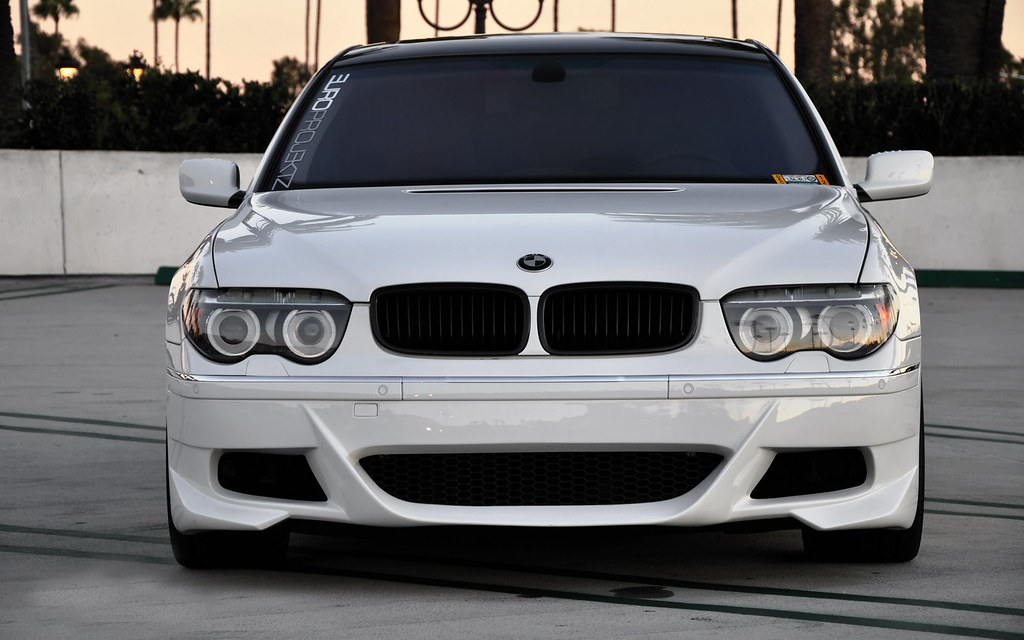
11. **BMW 8-Series**The original BMW 8-Series, which graced American dealerships starting with the 1990 model year, represented an undeniable high-water mark for the distinguished German brand. It was a vehicle that was mechanically groundbreaking for its time, notably being only the second BMW model ever to feature a V12 engine. Visually, its sleek, low-slung design was unprecedented within BMW’s lineup, offering a dramatic departure from the more traditional styling of its contemporaries and setting new aesthetic benchmarks for luxury grand tourers. Its combination of sophisticated engineering and breathtaking design cemented its status as an instant classic.
Over the years, the allure of the original 8-Series has only grown stronger, transforming its most desirable variant, the 850CSi, into a highly sought-after collector’s car. Pristine examples of this particular model now command impressive average resale values, frequently hovering close to the $100,000 mark. This enduring appreciation speaks volumes about the original’s timeless appeal, its innovative engineering, and its significant impact on the automotive landscape, making it a revered piece of BMW history.
When the 8-Series nameplate was triumphantly revived, the new generation offered a distinctively modern interpretation of the grand touring concept. While it may not feature the glorious V12 engine that powered its illustrious predecessor, the current 8-Series brought something entirely new to the table: an M-badged variant. We had the distinct pleasure of spending time with the current-generation M8 Competition Coupe in 2020, and it proved to be an absolute showstopper, effortlessly grabbing as much attention and admiration as many of the most highly coveted Italian supercars, particularly when adorned in a brightly colored paint scheme.
This contemporary 8-Series, particularly in its high-performance M guise, masterfully captures the essence of what made the original so special. It is undeniably as distinctive, sumptuously luxurious, and commensurately pricey as its forebear, offering a premium and exhilarating driving experience that remains true to the spirit of the 8-Series. Its return proves that a legendary nameplate can evolve with the times, embracing new powertrain philosophies and performance benchmarks, all while resolutely maintaining its core identity as a symbol of ultimate Bavarian luxury and high-performance engineering.
Car Model Information: 2026 BMW 840 Gran Coupe i
Name: BMW 8 Series
Production: 1990–1999,2018–present
Class: Grand tourer
BodyStyle: coupé,convertible,Sedan (automobile)
Layout: Rear-wheel drive,All-wheel drive
Categories: Articles with short description, BMW vehicle series, CS1 German-language sources (de), Commons category link is on Wikidata, Coupés
Summary: The BMW 8 Series is a range of grand tourer coupes and convertibles produced by BMW.
The 8 Series was introduced in 1990 under the E31 model code and was only available as a two-door coupé. It is powered by a range of naturally aspirated V8 and V12 petrol engines. The E31 started production just as E24 6 Series production ended; however, it is not considered a direct successor. The E31 was discontinued in 1999 due to poor sales.
The model range was later reintroduced in 2018 with the second generation, G15 8 Series. It launched in coupé (G15), convertible (G14), and four-door Gran Coupé (G16) body styles, as the successor to the F06/F12/F13 6 Series lineup. The G15 8 Series introduces an inline-six diesel engine, and a high-performance BMW M8 trim later joined the lineup as well as the luxury inspired Alpina B8.
Get more information about: BMW 8 Series
Buying a high-performing used car >>>
Brand: BMW Model: 8-Series
Price: $95,325 Mileage: 719 mi.
Read more about: Buyer Alert: 12 Luxury Cars Turn Into Repair Nightmares After Hitting 60000 Miles
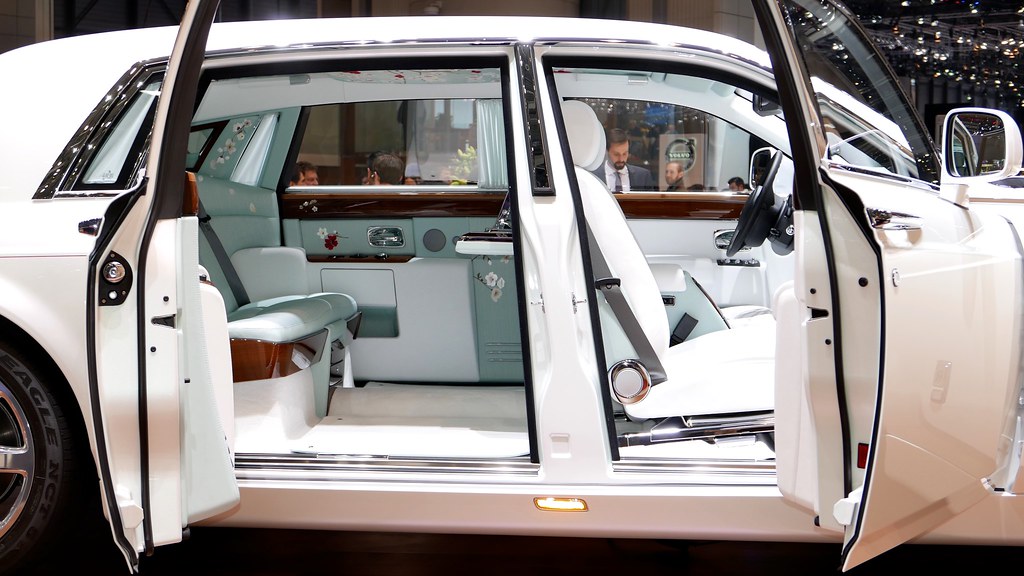
12. **Rolls-Royce Phantom**Rolls-Royce is set to celebrate the illustrious 100th anniversary of its iconic Phantom nameplate in 2025, a testament to a century of unparalleled luxury and engineering excellence. The name “Phantom” was originally conceived to distinctly separate the brand’s most high-end vehicle from its equally revered, though slightly less exclusive, supernatural-themed sibling, the Silver Ghost. The Phantom lineage, however, has not been without its interruptions; it was temporarily discontinued during the tumultuous period of the Second World War, only to be resurrected as an exclusive model meticulously crafted for the British Royal family. This fourth-generation Phantom stands as the rarest of all, with an astonishingly limited production run of just 18 examples ever built.
Following this exclusive period, the Phantom V, launched in 1959, marked a return to a broader, albeit still supremely affluent, public sale. It continued the tradition of offering bespoke luxury to the world’s wealthiest businesspeople and heads of state, becoming the ultimate symbol of success and refinement. This model was subsequently replaced after more than a decade by the Phantom VI, which would eventually become the last generation of the car before its second, more prolonged discontinuation, lasting for a decade. According to meticulous Rolls-Royce records, the final Phantom VI was exquisitely built in 1993 and delivered to none other than the Sultan of Brunei, marking the end of an era.
The nameplate then lay dormant for a period, only to be dramatically brought back to spearhead the brand’s monumental relaunch in 2003, now under the discerning ownership of BMW. The Phantom VII represented a profound reimagining, departing significantly from its predecessors with its distinctly modern styling and a cutting-edge spaceframe chassis. Yet, despite these contemporary advancements, it remained just as opulent, if not more so, than any Phantom before it, effortlessly blending traditional craftsmanship with twenty-first-century luxury, proving to be an undeniable commercial success with discerning buyers worldwide.
Today, the latest generation of this automotive masterpiece, the Phantom VIII, unveiled in 2017, proudly remains in production, continuing its legacy as the epitome of automotive luxury. Like all Phantoms before it, ownership doesn’t come cheaply; prices commence north of an impressive $500,000 and can escalate significantly higher with the inevitable custom commissions and bespoke personalization options. The Rolls-Royce Phantom, through its various comebacks and continuous evolution, consistently reaffirms its status as a timeless icon, perfectly embodying the pinnacle of luxury, prestige, and engineering artistry, adapting to the ages while retaining its unwavering essence.
Read more about: Inside Donald Trump’s Lavish Car Collection: From Classic Rolls-Royces to Supercars

13. **Honda/Acura NSX**The Honda NSX, known as the Acura NSX in the American market, has experienced the rare fate of being discontinued not once, but twice, most recently after the 2022 model year. Its initial debut in 1989 caused an absolute sensation in the automotive world. This first-generation supercar handled unlike any other car on the market at the time, boasting the same revered Japanese reliability synonymous with Honda, yet possessing the unique ability to be driven comfortably at everyday speeds. It was a pioneering machine, not only for Honda but for the entire supercar segment, demonstrating that exotic performance could coexist with practical usability.
However, the bursting of the Japanese economic bubble meant that Honda lacked the necessary funds to continually develop the car, preventing it from keeping pace with rapidly evolving supercar technologies. By the time it was discontinued, it had, regrettably, lost some of the unique, market-beating edge that initially defined it. Its temporary departure left a void in the hearts of enthusiasts who cherished its distinctive blend of performance and everyday drivability, awaiting a true successor to its groundbreaking spirit.
Honda eventually brought the NSX back for a second generation in 2016, once again promising a distinctively Japanese take on the supercar formula. This iteration was engineered to be practical, easy to live with, and yet unequivocally fast enough to compete with its European exotica counterparts when pushed. Much like its original incarnation, however, the second-generation NSX never quite achieved the sales volumes that might have been hoped for, leading to its eventual send-off in 2022 with the introduction of the special NSX Type S, marking the conclusion of its second production run.
The story of the NSX, however, is likely far from over. Rumors and reports suggest that a new, entirely electric successor is currently in the works, poised to make its debut later in the decade. While further concrete details remain sparse at this stage, the prospect of an electric NSX highlights Honda’s unwavering commitment to innovation and high-performance, suggesting that this legendary nameplate will continue to evolve, pushing the boundaries of what a truly accessible and exhilarating supercar can be in the electrifying future of automotive engineering.
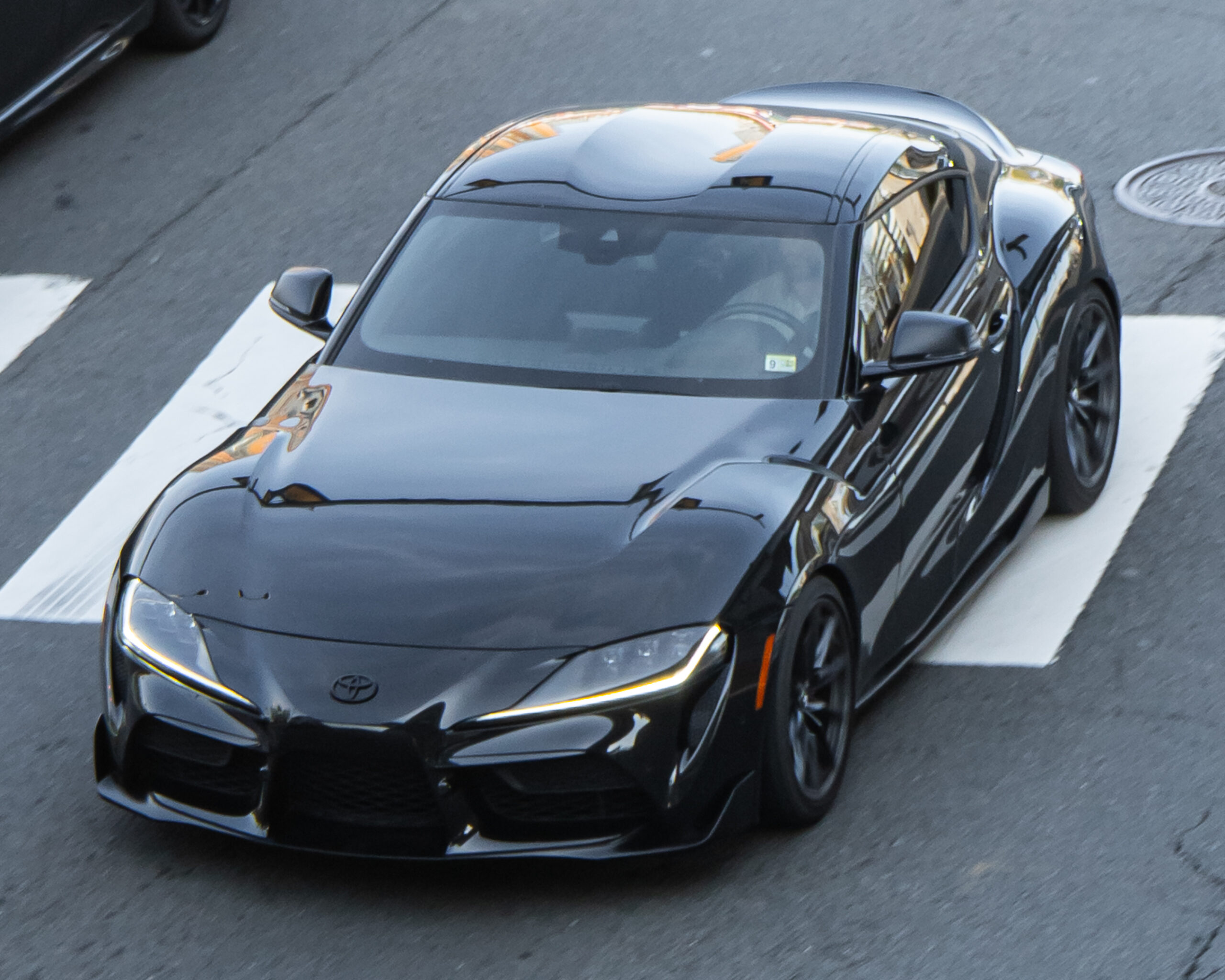
14. **Toyota Supra**The highly anticipated return of the Toyota Supra in 2019 generated an immense buzz, though it was not without its share of controversy, primarily due to its shared parts and platform with the BMW Z4. Nevertheless, few genuine Toyota enthusiasts could dispute that the revival of the Supra nameplate was, unequivocally, a positive development for the automotive world. Whether experienced in its potent 3.0-liter, manual transmission guise or with the smaller engine and an automatic gearbox, the GR Supra quickly established itself as a remarkably solid driver’s car, striking a compelling balance between everyday practicality and exhilarating track readiness. Its distinctive and aggressive styling, which remains just as striking today as it did upon its unveiling, further enhanced its visual appeal.
To fully appreciate the new Supra, one must acknowledge its legendary predecessor, the revered MkIV Supra. Its iconic 2JZ engine, particularly in its twin-turbo 2JZ-GTE form, is rightfully considered one of the most sought-after tuners’ engines around the globe. This powerhouse unit is celebrated for its extraordinary durability and its remarkable ability to handle immense amounts of power with only a few, carefully chosen upgrades. The enduring popularity of the MkIV, fueled by its robust engineering, has cemented its place in automotive folklore, influencing generations of performance enthusiasts.
Indeed, the old adage, “they don’t make them like they used to,” rings profoundly true when comparing the 2JZ’s almost unparalleled tuning potential and vast aftermarket support to most modern engines. The MkIV Supra, even in its stock configuration, has transcended mere transportation to become a coveted collector’s item, with the most pristine examples frequently selling for astounding six-figure sums at auction. This context created an almost insurmountable bar for any successor to clear, setting incredibly high expectations for the new model.
In light of such an illustrious heritage, the fifth-generation Supra could never have realistically lived up to the sometimes unreasonably high expectations set by some purists and long-time enthusiasts. However, for those willing to look beyond these towering benchmarks and appreciate the car for its own merits, the modern GR Supra reveals itself as an undeniably enjoyable, exceptionally competent, and temptingly priced sports car. It stands as a testament to Toyota’s ability to resurrect a legend, blending the thrill of performance with the advancements of contemporary engineering, inviting a new generation of drivers to experience the Supra magic.
A New Chapter in Automotive Legends
As we’ve journeyed through these remarkable automotive comebacks, it becomes abundantly clear that the industry is navigating a fascinating crossroads where deep-seated nostalgia harmoniously intertwines with groundbreaking innovation. The resurrection of these iconic nameplates is far more than a simple exercise in retro design; it represents a profound strategic commitment to reimagining what a truly great vehicle can be in an accelerating, technologically driven world. Each meticulously engineered return we’ve explored, from the electrified audacity of the GMC Hummer EV to the refined opulence of the Rolls-Royce Phantom, is a testament to the enduring power of automotive heritage and the boundless potential of modern advancements.
These vehicles are not merely a nod to cherished memories; they are bold statements about the future, demonstrating that legendary designs and exhilarating performance can indeed evolve to meet contemporary demands for efficiency, connectivity, and sustainability. They captivate a diverse audience, appealing simultaneously to seasoned enthusiasts who yearn for the spirit of yesteryear and new generations eager for cutting-edge technology and environmental consciousness. The success of these ventures underscores a vital truth: the most impactful automotive creations are those that can transcend time, adapting their core essence to resonate with changing tastes and technological landscapes.
Car Model Information: 1995 Toyota Supra SZ
Name: Toyota Supra
Caption: Toyota GR Supra (J29/DB)
Manufacturer: Toyota
Aka: unbulleted list
Production: unbulleted list
Class: Sports car
BodyStyle: fastback,coupé
Layout: Front-engine, rear-wheel-drive layout
Predecessor: Toyota Celica (A20)
Categories: 1980s cars, 1990s cars, 2000s cars, 2010s cars, 2020s cars
Summary: The Toyota Supra is a sports car and grand tourer manufactured and developed by the Toyota Motor Corporation beginning in 1978. The name “supra” is a definition from the Latin prefix, meaning “above”, “to surpass” or “go beyond”. The initial four generations of the Supra were produced from 1978 to 2002. The fifth generation has been produced since March 2019 and later went on sale in May 2019. The styling of the original Supra was derived from the Toyota Celica, but it was longer. Starting in mid-1986, the A70 Supra became a separate model from the Celica. In turn, Toyota also stopped using the prefix Celica and named the car Supra. Owing to the similarity and past of the Celica’s name, it is frequently mistaken for the Supra, and vice versa. The first, second and third generations of the Supra were assembled at the Tahara plant in Tahara, Aichi, while the fourth generation was assembled at the Motomachi plant in Toyota City. The 5th generation of the Supra is assembled alongside the G29 BMW Z4 in Graz, Austria by Magna Steyr. The Supra traces much of its roots back to the 2000GT owing to an inline-6 layout. The first three generations were offered with a direct descendant to the Crown’s and 2000GT’s M engine. Interior aspects were also similar, as was the chassis code “A”. Along with this name, Toyota also included its own logo for the Supra. It was derived from the original Celica logo, being blue instead of orange. This logo was used until January 1986, when the A70 Supra was introduced. The new logo was similar in size, with orange writing on a red background, but without the dragon design. That logo, in turn, was on Supras until 1991 when Toyota switched to its current oval company logo. The dragon logo was a Celica logo regardless of what colour it was. It appeared on the first two generations of the Supra because they were officially Toyota Celicas. The dragon logo was used for the Celica line until it was also discontinued. In 1998, Toyota ceased sales of the fourth-generation Supra in the United States. Production of the fourth-generation Supra for worldwide markets ended in 2002. In January 2019, the fifth-generation Supra, which was co-developed with the G29 BMW Z4, was introduced.
Get more information about: Toyota Supra
Buying a high-performing used car >>>
Brand: Toyota Model: Supra
Price: $49,999 Mileage: 16,556 mi.
Read more about: Dodgy Drives and Mechanical Mayhem: 14 Japanese Cars You Absolutely Should Not Buy, According to an Automotive Expert
In this vibrant new era, manufacturers are proving that the past is not a prison but a rich source of inspiration, a foundation upon which truly revolutionary vehicles can be built. As more retired stars are dusted off and re-engineered, they not only enrich our driving experience but also write dynamic new chapters in the annals of automotive history, proving conclusively that some legends truly are destined to live forever, roaring back with renewed purpose and unparalleled charisma.

